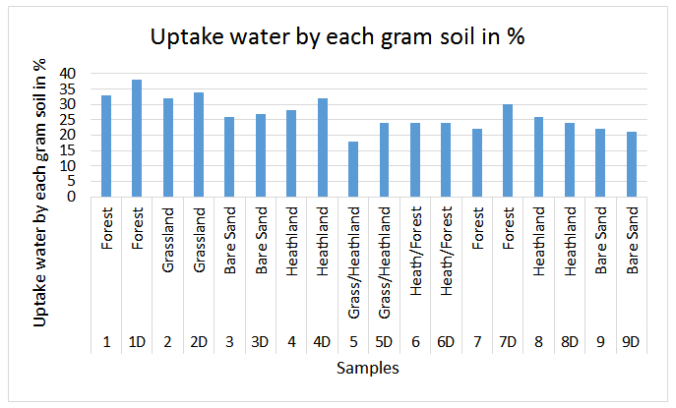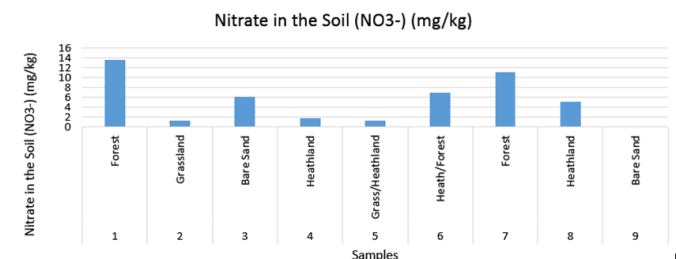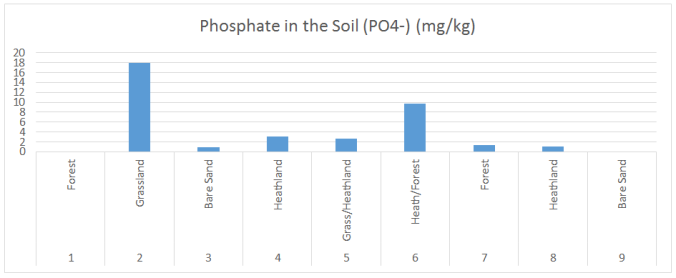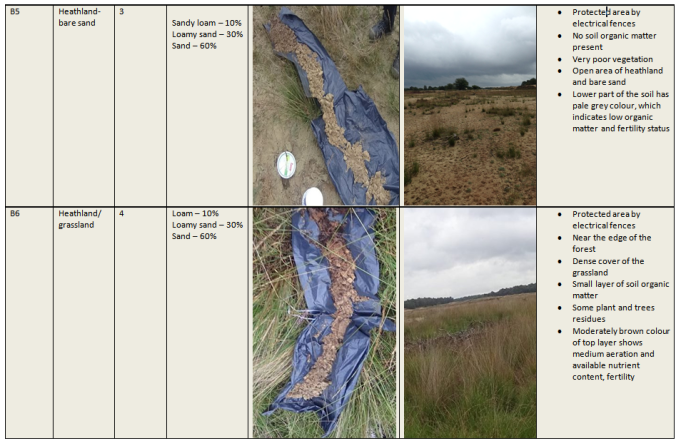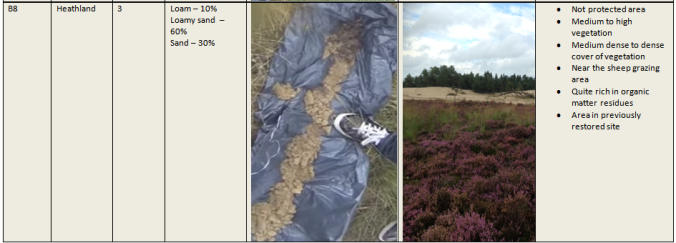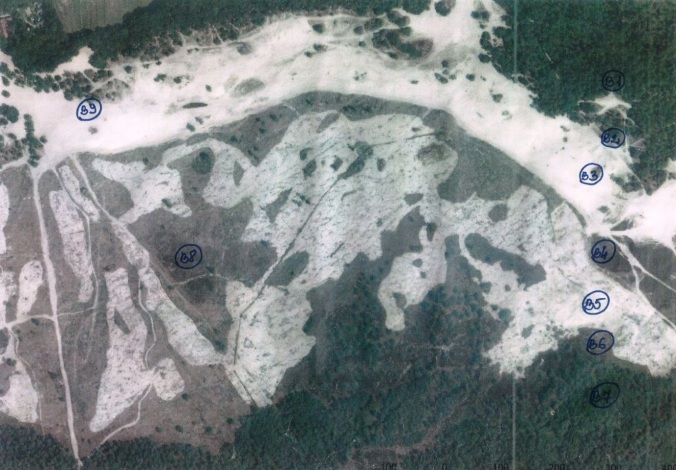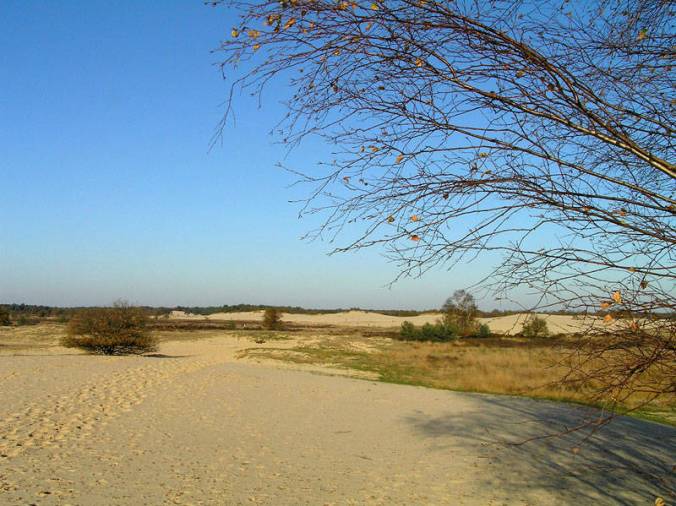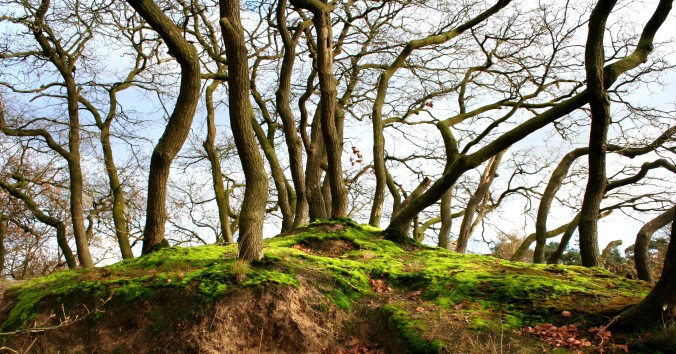A relation between the pH and the Soil Organic Matter is that organic acids in humus (organic matter) don’t resign their hydrogen (H) easily. Hydrogens are part of carboxyl (-COOH) groups under acidic conditions. Once a positive H is released, the negative COO- develops a negative charge. When the pH of the soil increase, the release of H of the carboxylgroups buffer the increase of pH and creates also a cation exchange capacity (negative charge). With an increase of organic matter, the soil will turn back into its natural capacity, what means an increase of pH in acid soils.
The difference between the main stages was obviously measured by percentages. Sample 1, 6, 7 and 8 had a higher percentage in the Organic Matter than the other samples. High organic matter percentages were measured by the forests and the heathlands. This is because plant productivity is linked to organic matter. High organic matter increases productivity and in turn the organic matter productivity increases. The samples 1, 6, 7 and 8 were forest ore places near to the forests and because of the lower pH’s of these samples in relation to the organic matter this was correctly analysed.
In this experiment is the maximum amount of water retention of the soil of the Loonse and Drunense Dunes was analysed in duplicate (D) in the laboratoria at Avans Hogeschool in Breda. Because of the different succession stages there was a variety of percentages of each gram soil per gram water.
Fluctuactions between in samples of the forests (24,30,33 and 38%), the grasslands (32 and 34%) and the heathlands (24,26,28 and 32%) of water retention were the samples with the highest amounts. This fluctuations means that these areas with the highest amount of water retention are in relation to the experiment of organic matter having a high organic matter percentage, because of the peaty soil.
An higher percentage of organic matter means that the water retention will be higher because of a smaller size of pores between the particles. Sandy soils provide easier passages or transmission of water through the soil. This is why the Bare Sand have a lower percentage of water retention than the other succession stages.
Saturation of dissolved nutrients in the water in the soil leads to precipitation of the nutrients, what leads to nutrition loss in the layers of the soil. The mobility of dissolved nutrients leaching faster than undissolved nutrients, this is a big important knowing for the chemistry.
By preceding winters the wet soil is good for the flora and fauna. Plants needs water to growth and survive and animals such as microorganisms can also survive.
In this experiment the chemical and nutritional benefits of organic matter are related to soil organic matter, water retention, cation exchange capacity, and the ecology of the growing plants and organisms. Organic matter retains nutrients such as nitrate, phosphate and ammonium for the mineralisation and immobilization through decomposition of organic matter by microorganisms and prevents these nutrients leaching to deeper soil layers in relation to the water retention. Soil organisms retain the available nutrients that are not taken up by plants. In organic matter depleted soils like bare sand, these nutrients would be lost by leaching through the soil.
Anion exchange capacity is that the soil will attract and retain anions (negative charge). The anions held and retained by the soil particles such as phosphate and nitrate. Anion exchange capacity depents on the pH of the soil and increases as the pH of the soil decreases.
In the forest there was a high amount between seven and 13 mg/kg. The heathland had a lower concentration like 5 mg/kg of nitrate and the bare sand raised up to 6 mg/kg by the third sample and the last sample, sample nine was under the detection limits.
This means that the nitrate in the organic matter in the forest is very high comparing to the other results. In the heathland there is like circa 50% less nitrate than in the forest what means that there is less organic matter in this succession stage. Because of the hight result in the third sample of the bare sand, it looks like that there has been an enormous amount of nitrogen content of horse stool put down.
Phosphate analysing was extreme high by the second sample in the grassland and the sixth sample of the heathland/forest. This is probably only phosphate because there is also orto phosphate. Orto phosphate is bounded to carbon lengths. Expected is that the orthophosphate would be much higher in the forest because of the organic matter.
Ammonium content was under the detection limits. This means that the content was too low for analysing the amount of ammonium. There could be something wrong with the default ore with the method.

